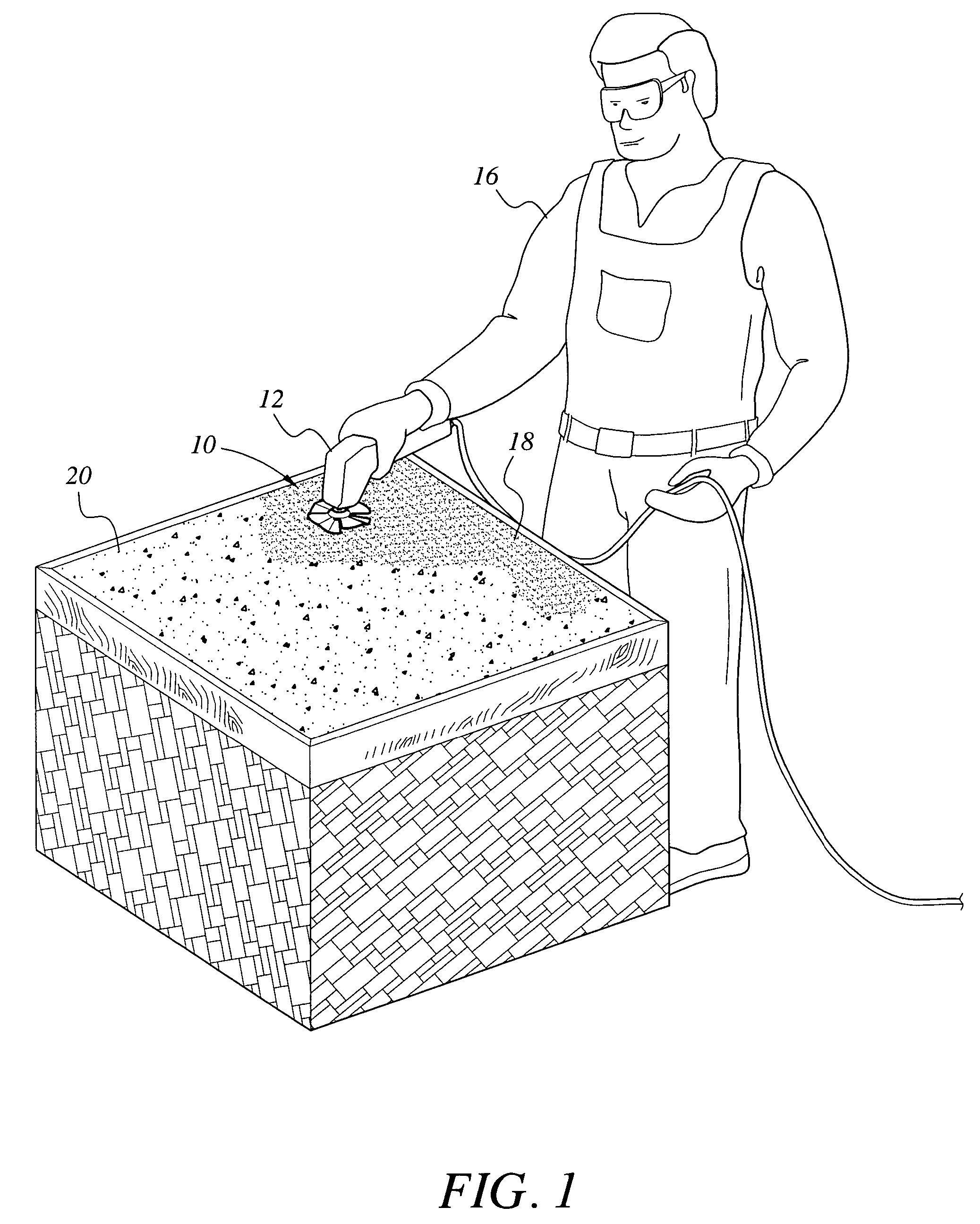Surface finisher
a surface finisher and finisher technology, applied in the field of surface finishers, can solve the problems of concrete being concrete is subject to premature deterioration, and the weight of trowels is substantial
- Summary
- Abstract
- Description
- Claims
- Application Information
AI Technical Summary
Benefits of technology
Problems solved by technology
Method used
Image
Examples
Embodiment Construction
[0031]The present invention is a surface finisher, a first embodiment of the finisher being designated generally as 10 in the drawings. As shown in FIG. 1, the surface finisher 10 is coupled to an angle grinder 12 or other hand-operated power tool, such as a drill, rotary tool, etc. The angle grinder 12 may have variable speed control. Variable speed control allows the user to slow down or speed up the surface finisher 10, dependent on what stage of the setting process the concrete or other viscous, semi-fluid material is in. The portable nature of angle grinder 12 further allows the user 16 to put the correct amount of pressure on the surface finisher 10 to achieve the desired surface smoothness from the surface finisher 10, and further to use the surface finisher 10 in confined or awkward areas. FIG. 1 shows a user 16 in the act of finishing the surface 18 of a concrete countertop 20. The surface finisher 10 may be configured to work along the edges of relatively small areas, and ...
PUM
 Login to View More
Login to View More Abstract
Description
Claims
Application Information
 Login to View More
Login to View More - R&D
- Intellectual Property
- Life Sciences
- Materials
- Tech Scout
- Unparalleled Data Quality
- Higher Quality Content
- 60% Fewer Hallucinations
Browse by: Latest US Patents, China's latest patents, Technical Efficacy Thesaurus, Application Domain, Technology Topic, Popular Technical Reports.
© 2025 PatSnap. All rights reserved.Legal|Privacy policy|Modern Slavery Act Transparency Statement|Sitemap|About US| Contact US: help@patsnap.com



